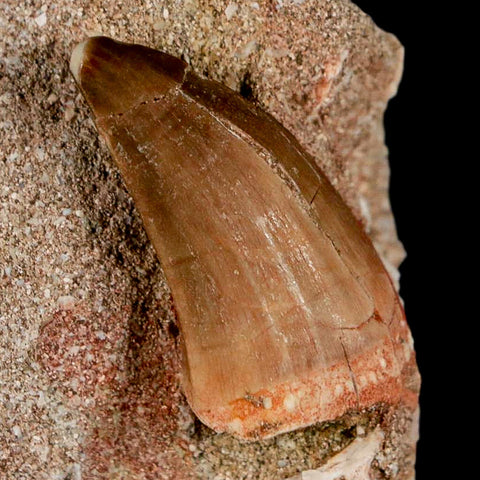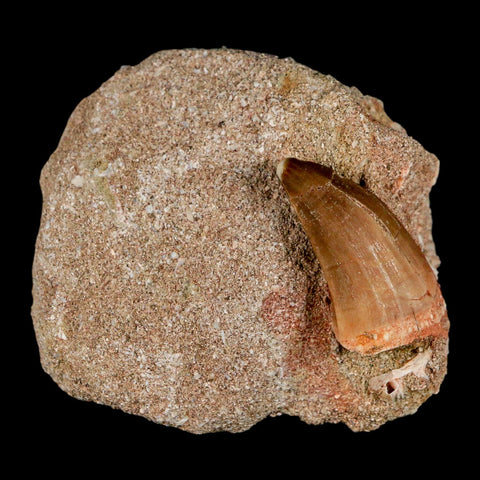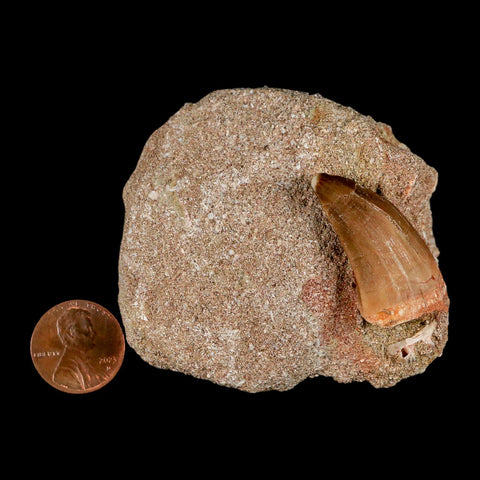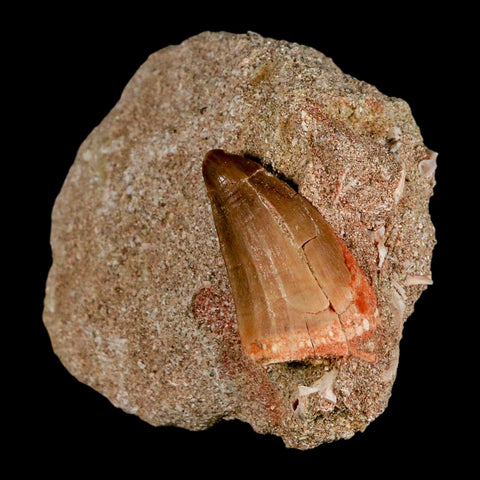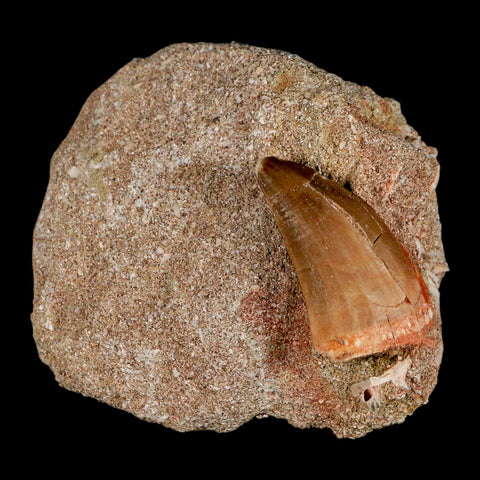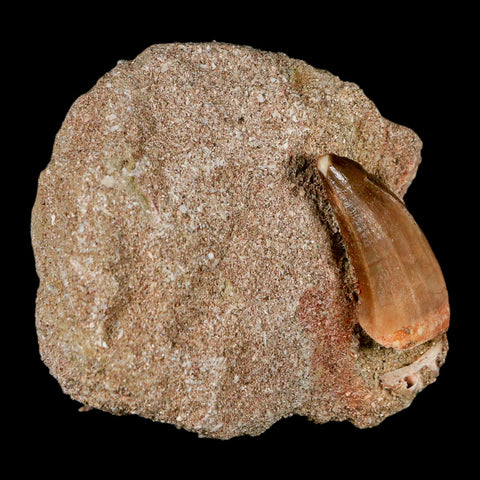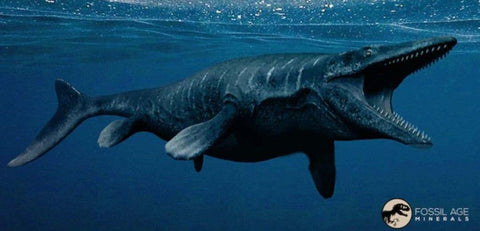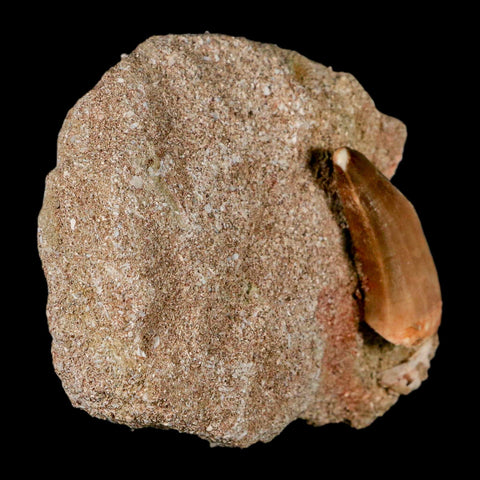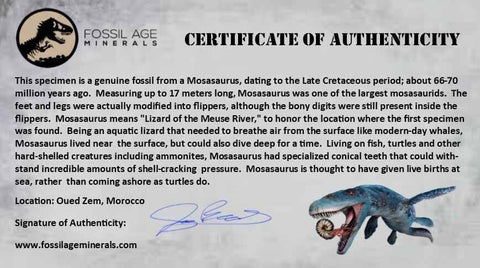1.2" Mosasaur Baugei Fossil Tooth In Matrix Late Cretaceous Dinosaur Era COA
Location: Oued Zem, Morocco
Weight: 3.6 Ounces
Dimensions: 2.3 Inches Long, 2.5 Inches Wide, 1.2 Inches Thick (Matrix)
Tooth Dimensions: 1.2 Inches Long, 0.8 Inches Wide.
Comes with a Certificate of Authenticity.
The item pictured is the one you will receive.
100 - 66 Million Years old, Late Cretaceous, Maastrichtian Epoch.
Mosasaurus Baugei prowled the seas of the Late Cretaceous as a fierce marine predator, part of a vanished clan of giant mosasaurs. Though often mistaken for dinosaurs, these beasts belonged to a bold lineage of squamates, closely linked to today’s snakes and monitor lizards. The genus Mosasaurus—meaning “Meuse lizard”—claims its name from the Meuse River valley in the Netherlands, the very ground where these ancient hunters first revealed themselves.
Mosasaurus baugei specifically refers to a species within this genus, characterized by particular anatomical features that distinguish it from other Mosasaurus species, such as M. hoffmannii or M. maximus. While general characteristics of Mosasaurus include a streamlined body, powerful tail, and jaws armed with numerous conical teeth adapted for grasping slippery prey, the specific diagnostic features of M. baugei would be detailed in paleontological descriptions based on fossil evidence, often involving skull and dental morphology. These features allow paleontologists to classify and differentiate between various mosasaur species, contributing to a more complete understanding of their diversity and evolutionary relationships within the Late Cretaceous marine ecosystems.
Credible Reference Sources:
- Everhart, Michael J. Oceans of Kansas: A Natural History of the Western Interior Seaway. Indiana University Press, (Print)
- Lingham-Soliar, Theagarten. Mosasaur Paleobiology. Blackwell Publishing, (Print)
- Palmer, Douglas, and Barry Cox. The Illustrated Encyclopedia of Dinosaurs and Other Prehistoric Creatures. Hermes House, (Print)
- Russell, Dale A. A Vanished World: The Dinosaurs of Western Canada. Royal Tyrrell Museum of Palaeontology (Print)
- Williston, Samuel W. Water Reptiles of the Past and Present. University of Chicago Press, (Print)

Please be aware of the nature of fossils:
Being buried under the ground for millions of years under tons of pressure tends to be rough. No fossil comes out of the ground whole and perfect. Most fossils have undergone some restoration, while others are altered by man simply to enhance their presentation in different ways. The workers in Morocco do a very professional job of unearthing and preserving these natural treasures; however, natural cracks are commonly visible on the surface. These are part of the natural beauty of the fossil and are not considered defects.


